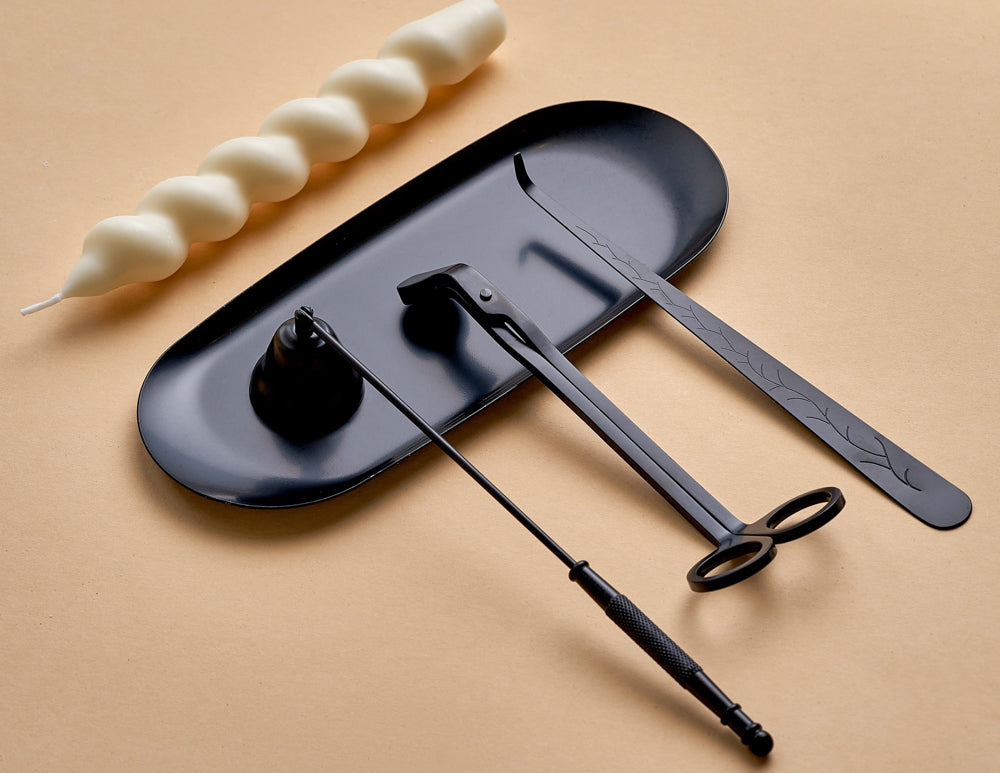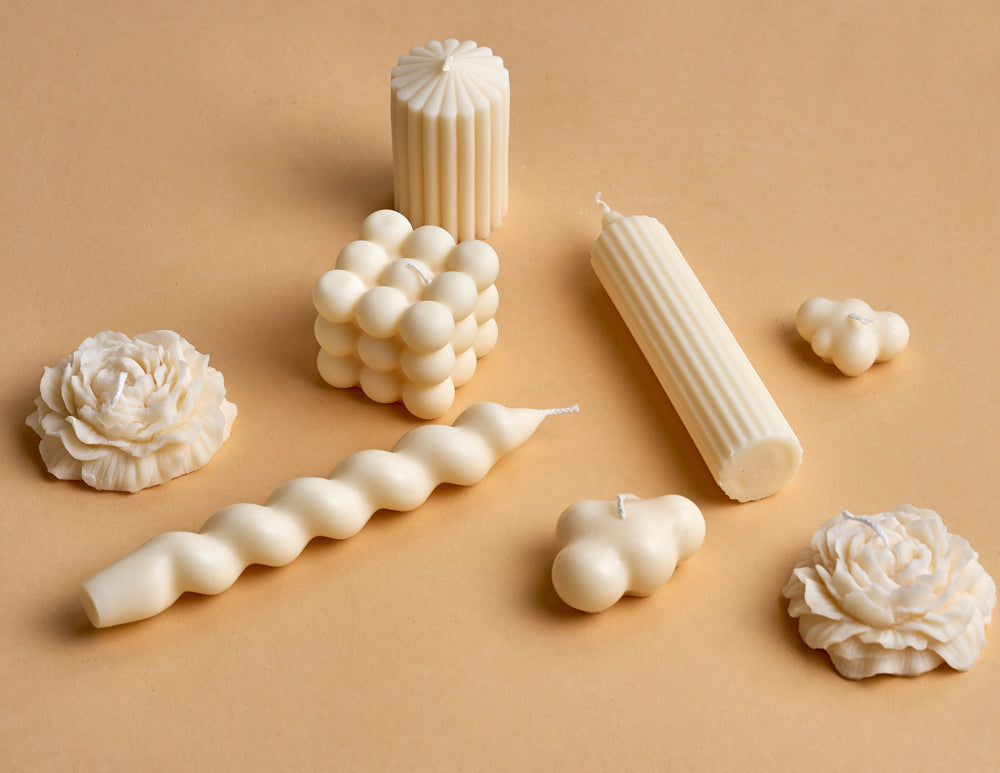Candles in our interior — why we love them?
Candles have long been a staple of interior design, providing warmth, ambiance, and style to any space. In this article, we'll explore the allure of candles in home decor and delve into the world of scented candles, including baobab candles, Yankee candles, and WoodWick candles. We'll also answer common questions about candle-making, such as how to make candles, how to stop candles from sinking in the middle, why homemade candles may crack, and what the best wax for candles is.
The Enduring Allure of Candles in Home Decor
The soft, flickering glow of candles adds a touch of warmth and intimacy to any room, creating an inviting atmosphere. Candles come in various shapes, sizes, and colors, allowing you to customize your home's look according to your personal taste. They can serve as the centerpiece of a dining table or provide subtle accents throughout your living space.
Scented Candles: A Fragrant Touch for Your Space
Scented candles elevate your home's ambiance by adding a pleasant aroma to the environment. Some popular options include:
— Baobab Candles: A Luxurious Scented Experience

Baobab candles are known for their exquisite fragrances and stunning, hand-blown glass containers. These candles not only smell incredible but also serve as eye-catching decorative pieces for your home.
— Yankee Candles: A Classic Choice for Every Home

Yankee candles are a popular choice for their wide range of scents and affordable prices. With an extensive collection of fragrances, you're sure to find the perfect scent to match your home's decor and your personal preferences.
— WoodWick Candles: A Cozy and Crackling Ambience

WoodWick candles are unique because they feature a wooden wick that crackles as it burns, creating a cozy fireside ambiance. These candles come in various scents and sizes to suit any home's aesthetic.
How to Make Candles: A DIY Approach
Making your candles can be a fun and rewarding project. To get started, gather the following materials:
- Wax (such as soy, paraffin, or beeswax)
- Wicks
- Fragrance oils (optional)
- Dye (optional)
- A double boiler or a heat-proof container and a saucepan
- A thermometer
- Candle molds or containers

First, melt the wax using a double boiler or by placing a heat-proof container inside a saucepan filled with water. Heat the wax until it reaches the recommended pouring temperature (usually between 150-180°F, depending on the type of wax). While the wax melts, prepare your molds or containers by attaching the wick to the bottom.
Next, mix in any desired fragrance oils and dye, stirring until thoroughly combined. Pour the wax into your molds or containers, ensuring that the wick remains centered. Allow the candles to cool completely before removing them from the molds or trimming the wick to about 1/4 inch.
Troubleshooting Common Candle Problems
— How to Stop Candles from Sinking in the Middle
Candles may sink in the middle due to temperature fluctuations during the cooling process. To prevent this, allow the candles to cool slowly and evenly. You can also try pouring the wax in stages, allowing each layer to partially set before adding the next.
— Why Are My Homemade Candles Cracking?
Candles may crack if they cool too quickly or if the wax isn't the right temperature when poured. To prevent cracking, ensure that the wax is at the recommended pouring temperature and allow the candles to cool slowly and evenly. Placing the candles in a warm area or covering them with a cardboard box can help regulate the cooling process.
What is the Best Wax for Candles?

Several types of wax are available for candle-making, and the best choice depends on your preferences and desired outcome. Here are some common types of wax:
Soy wax: A popular choice for its eco-friendliness and clean burn, soy wax is made from soybean oil and provides a longer burn time than other waxes. It is an excellent option for scented candles, as it holds fragrance well.
Paraffin wax: Derived from petroleum, paraffin wax is the most common type used in commercial candles. It is affordable and easy to work with but produces more soot than other waxes and may not be the most eco-friendly option.
Beeswax: A natural and renewable resource, beeswax candles are known for their slow, clean burn and subtle honey scent. While beeswax is more expensive than other waxes, it is an excellent choice for those seeking an all-natural, non-toxic candle.
Palm wax: Made from palm oil, palm wax is another eco-friendly option. It has a crystalline appearance and provides a unique texture to candles. However, it can be challenging to work with and may not hold fragrance as well as other waxes.
The Art of Candle Arrangements
Incorporating candles into your home's design is more than just placing them randomly. Thoughtful arrangements can create a more significant visual impact and enhance the overall aesthetic of your space. Here are a few ideas for arranging candles in your home:
- Group candles of varying heights and sizes together to create a dynamic and visually appealing display. This works particularly well on mantels, dining tables, or coffee tables.
- Use candles as a focal point by placing them in a large hurricane vase or lantern. This can make a bold statement and draw attention to the candles, while also providing some protection from drafts.
- Create symmetry by placing matching candles on either side of an object, such as a mirror, artwork, or fireplace. This can provide balance and create a sense of harmony in your space.

Incorporate candle holders, trays, or decorative plates to add an extra layer of style and sophistication to your candle arrangements. This can also help protect your surfaces from any potential wax spills.
Candle Safety Tips
While candles are a beautiful addition to any home, it's essential to prioritize safety when using them. Follow these tips to ensure that you can enjoy your candles without any accidents:
- Always place candles on a heat-resistant surface and away from flammable materials such as curtains, bedding, or paper.
- Keep candles out of reach of children and pets.
- Ensure that candles are placed in a stable holder that won't tip over easily.
- Never leave burning candles unattended. Always extinguish candles before leaving the room or going to bed.
- Trim the wick to 1/4 inch before each use to prevent a large, unstable flame and reduce the risk of soot production.
- Avoid placing candles in drafty areas, as this can cause the flame to flicker and produce more soot or even lead to the candle extinguishing unexpectedly.
Integrating Candles into Different Interior Design Styles
Whether your home's design style is minimalist, modern, rustic, or traditional, candles can seamlessly integrate into your space. Here are some suggestions for incorporating candles into various design styles:
Minimalist: Opt for candles in simple, neutral colors and sleek, understated holders. This will allow the candles to blend seamlessly into the minimalist aesthetic without overpowering the space.
Modern: Choose bold, geometric candle holders or candles in vibrant colors to make a statement in a modern space. Abstract or uniquely shaped candles can also work well in a contemporary setting.
Rustic: In a rustic home, consider using candles made from natural materials like beeswax or soy wax. Place them in holders made from wood, metal, or stone to complement the rustic aesthetic.
Traditional: For a traditional space, opt for classic candlesticks or elegant lanterns to hold your candles. Choose candles in soft, muted colors to create a timeless and sophisticated look.
Conclusion
Candles are a versatile and timeless addition to any interior design, providing warmth, ambiance, and style. From luxurious baobab candles to cozy WoodWick candles, there is a candle for every taste and home aesthetic. By understanding the candle-making process, troubleshooting common issues, and thoughtfully arranging and integrating candles into your space, you can create a warm and inviting environment. With careful consideration of candle safety and an eye for design, you can transform your home with the simple yet powerful addition of candles.




